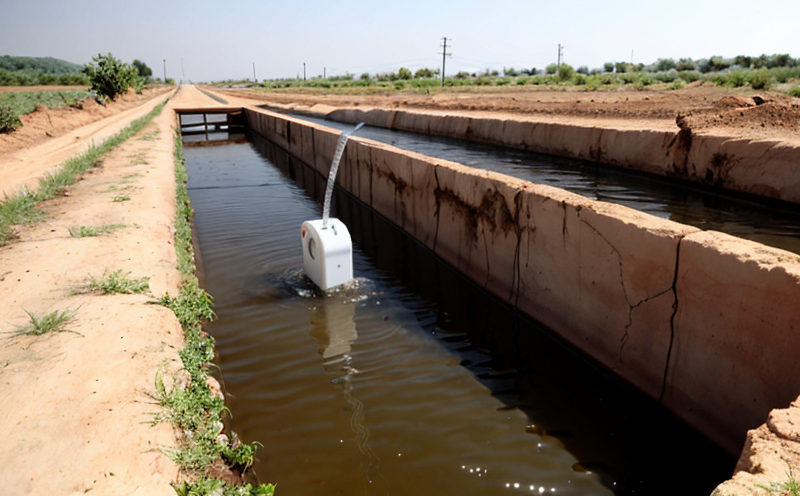ASTM D1688 Copper in Water by AAS Testing
The ASTM D1688 method specifies the procedure for determining copper in water using atomic absorption spectrophotometry (AAS). This test is crucial for assessing the quality of mine waters and groundwater, ensuring that they meet regulatory standards set forth by environmental protection agencies. Copper contamination can have significant impacts on aquatic ecosystems and human health.
The presence of excess copper ions in water sources poses a risk to both aquatic life and drinking water supplies. Copper is toxic at high concentrations for most aquatic organisms, which can disrupt the ecosystem's balance. In humans, prolonged exposure to high levels of copper in drinking water may lead to adverse health effects such as gastrointestinal issues and liver damage.
In mining operations, especially those involving metal extraction processes like gold or copper mining, there is a risk that groundwaters may become contaminated with copper from the mine site. Ensuring compliance with stringent regulatory standards can prevent potential environmental hazards and protect public health.
The ASTM D1688 method involves several steps including sample collection, preparation, and analysis using atomic absorption spectrophotometry equipment. Proper sample handling is critical to ensure accurate results, which include filtering samples through a 0.45 μm membrane filter before analysis. Calibration of the instrument with appropriate standards ensures reliable measurement.
After calibration, the sample solution is aspirated into the flame or graphite furnace and excited using either hydrogen chloride (HCl) or acetylene gas depending on the concentration range being analyzed. For lower concentrations, a low-pressure flame excitation is preferred; whereas for higher concentrations, the graphite furnace method provides better sensitivity.
The absorbance of light at 324.8 nm by copper ions in solution determines their concentration. This wavelength corresponds to the resonance line for copper (Cu II). Absorption values are then compared against a calibration curve generated from known concentrations of copper standards run under identical conditions as the samples.
The methodology outlined in ASTM D1688 provides accurate and precise results, making it suitable for regulatory compliance purposes. Compliance with these guidelines helps mining companies maintain sustainable practices while protecting both natural environments and public health.
Given its importance within the mining sector, this testing procedure plays a vital role not only in ensuring compliance but also in promoting responsible environmental stewardship by detecting potential sources of contamination early on.
Why It Matters
The quality and safety of mine waters and groundwater are paramount considerations for the mining industry. Copper, being one of the key metals extracted during mining operations, can pose risks if not properly managed. Excess copper in these water sources could lead to severe ecological impacts as well as health hazards for nearby communities.
- Environmental Impact: High levels of copper can be toxic to aquatic organisms, affecting biodiversity and ecosystem stability.
- Human Health Risks: Prolonged exposure to elevated copper concentrations in drinking water may result in various adverse health effects including gastrointestinal problems and liver damage.
Regulatory bodies worldwide enforce strict limits on copper content in mine waters. By adhering to these regulations through rigorous testing, mining companies demonstrate their commitment to sustainable practices that protect both the environment and public welfare. Properly conducted ASTM D1688 tests play an essential role in maintaining compliance with these standards.
Scope and Methodology
The scope of this service encompasses the detailed procedures outlined in ASTM D1688 for determining copper concentrations in mine waters and groundwater via atomic absorption spectrophotometry (AAS). This method is widely recognized for its accuracy and precision, particularly useful when dealing with low to moderately high concentrations of copper ions.
The testing process begins with the collection of representative water samples from various points around the mine site. Once collected, these samples undergo rigorous preparation steps before being analyzed:
- Filtering: Samples are filtered through a 0.45 μm membrane filter to remove particulate matter and other potential interferences.
- Dilution: Depending on the initial copper concentration, samples may need dilution prior to analysis to ensure they fall within the linear range of the calibration curve.
The prepared solutions are then subjected to calibration using certified reference materials against which unknown sample concentrations can be compared. Calibration involves preparing a series of standard solutions containing known amounts of copper and running them through the AAS apparatus under identical conditions as the samples.
For accurate results, it's important that all instrumental parameters such as flame height or graphite furnace temperature are optimized according to manufacturer recommendations. Once calibrated, the instrument is ready for sample analysis.
The actual measurement involves introducing each sample into the AAS apparatus where they are excited at 324.8 nm wavelength corresponding to the resonance line of copper (Cu II). The absorbance readings obtained from these measurements are plotted against the known concentrations of the standards, forming a calibration curve used for quantifying unknown samples.
This robust approach ensures that even small variations in sample composition do not significantly affect final results. Additionally, this technique allows for rapid turnaround times allowing for immediate corrective actions if necessary.





